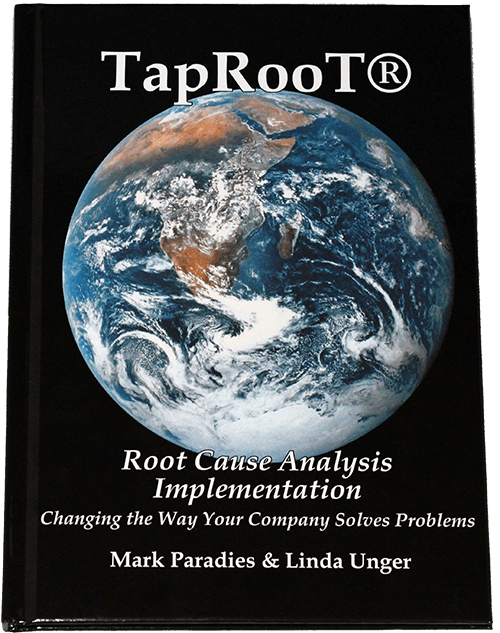Your Investigation is Complete – Now What?

TapRooT® provides the structure and expert guidance needed to determine human performance-based root causes, thereby eliminating blame culture. It then provides additional guidance on writing effective corrective actions, based on those root causes, to make sure you are giving your employees the tools they need to be successful in the future and prevent the same mistakes from happening again. Overall, the process gives terrific guidance to perform your investigation, from evidence collection all the way through corrective action development.
But then what? What happens after the investigation is complete? It’s nice to have a completed incident report, but the purpose of investigations is to improve your company. What you do with completed investigations is critical to making positive changes in your operations.
TapRooT®’s Root Cause Analysis Implementation book (Book 2 in the 10-book series) has some great ideas on how to make sure you get the most from your investigation results. Here are some post-investigation actions you can implement to properly implement those results.

Conduct a peer review for major investigations.
For complex or high-impact incident investigations, you should run the draft report through a peer review process. This will help you fine-tune the results and make sure you haven’t missed any subtle issues or fixes before submitting to management.
This is also a great time to grade your investigation. The TapRooT® Software has a built-in grading system, with customizable weighting to focus on those areas your company feels are important. You don’t want to submit a sub-par investigation to your management team. Grade it before routing it for final approval!
Obtain Corrective Action approval.
Now it’s time to get management approval of the corrective actions. You want to ensure you have adequate support and resources assigned to fix the problems discovered. Do the corrective actions actually fix the root causes? Are we avoiding blame, and targeting the human performance issues identified by the RCA?

Assign Corrective Actions with due dates.
Corrective actions are now assigned to the responsible parties. Make sure the right people are assigned to complete the actions, with adequate time and resources to implement. This is also a good time to make sure you have buy-in from those that will be implementing these actions.
Approve the report.
Your management team can now review and sign off on the investigation. It gives management’s backing to the results of the investigation and authorizes the corrective actions for implementation.
Disseminate lessons learned.
In parallel with corrective action implementation (or possibly as one of the corrective actions), Lessons Learned need to be quickly provided to the appropriate employees. Everyone must understand the problem that occurred, the root causes for the issues found, and management’s plan to fix the problems. It should be clear in these lessons learned that you are NOT blaming individuals; management is improving their own systems to ensure the employees have the tools they need to prevent these issues in the future.
Track your Corrective Actions to completion.
A corrective action is useless unless it is actually completed! A system for tracking implementation of the actions will make sure everyone is on the same page as far as due dates and responsibilities.

Use effectiveness metrics.
Are your corrective actions working? You should have a way to measure whether or not you’re improving. This often is nothing more than some simple audits of the corrective actions to see if you really fixed the causal factors you had identified in the investigation. Sometimes the “best” corrective actions don’t quite fix the issues; you need to see if those corrective actions were successful in preventing the mistakes that were identified.
Close the report for your investigation.
Finally, it is time to sign off the report as complete. When this occurs is up to your company. It may not make sense to do this after all corrective actions are completed. Some actions may take a considerable amount of time. A periodic review process can be put in place to look at open reports and determine whether management is satisfied that the goals were accomplished, and it is acceptable to close the report.
The output of your investigation is NOT a report.
These steps can make the difference between preventing a future issue, and recurrence of that issue. The outcome you are looking for is a safer work environment, quality products to our customers, reliable equipment or more efficient processes at your company. Successfully completing your investigation follow-up actions is key to improving your business.
Get more ideas in TapRooT®’s Root Cause Analysis Implementation book.




